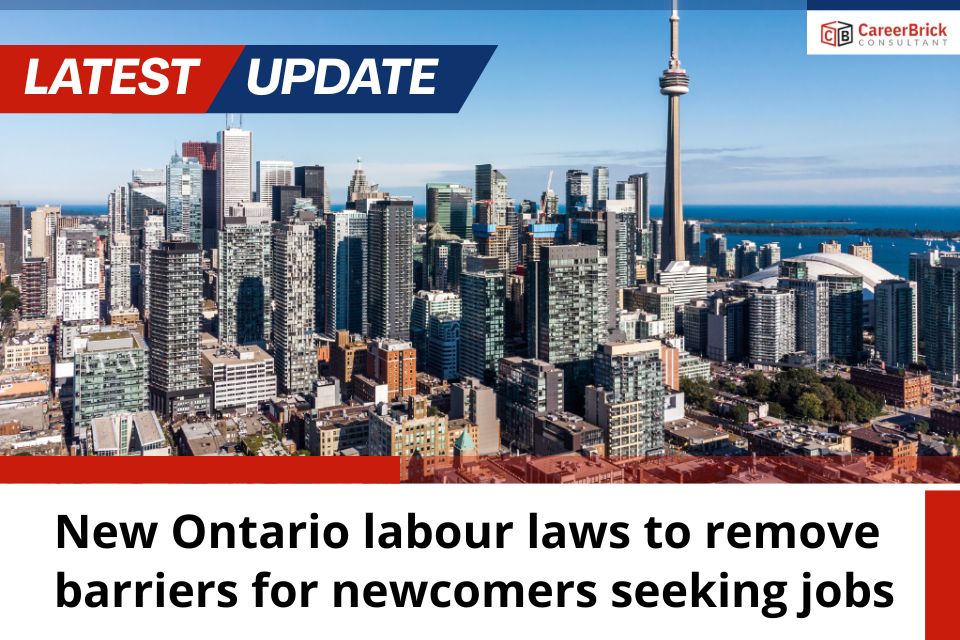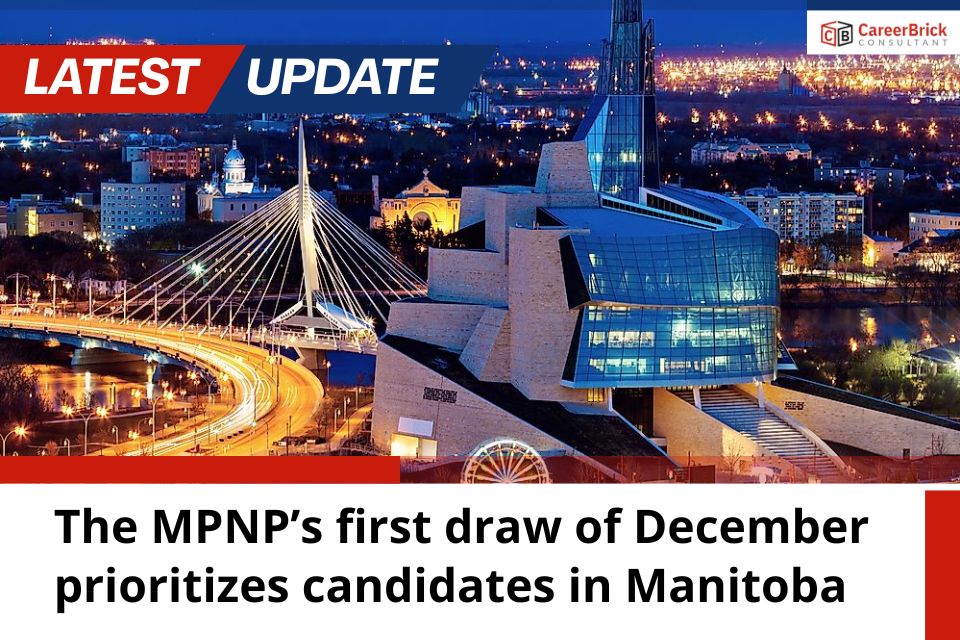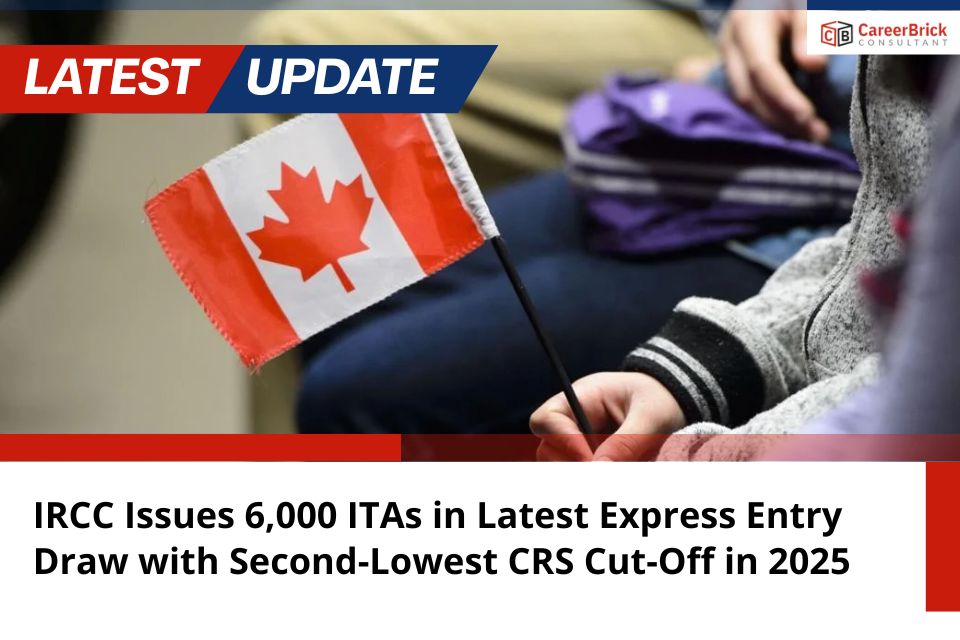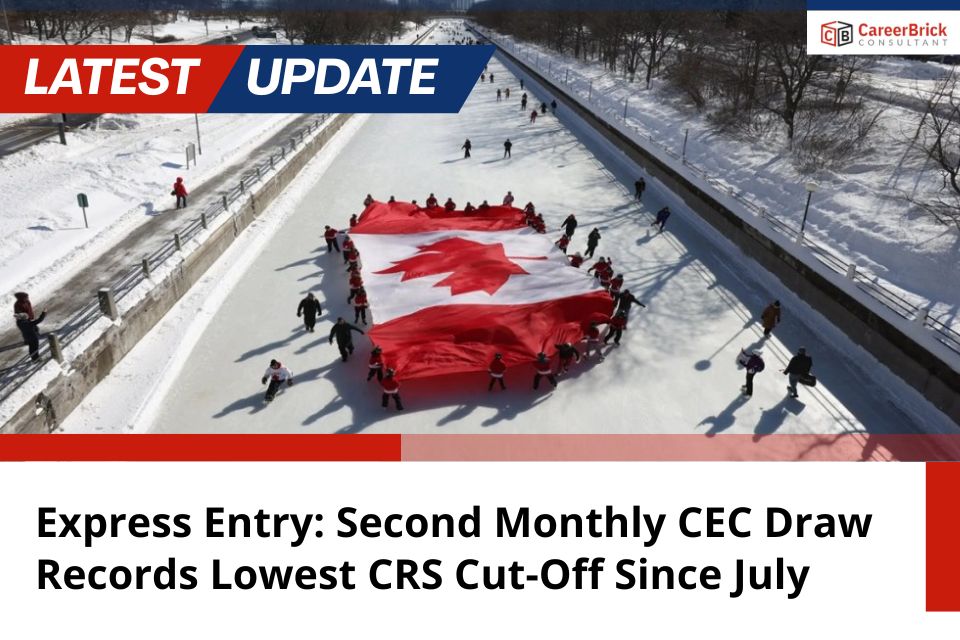A new government report reveals that foreign work experience may play a bigger role than Canadian work experience when it comes to obtaining permanent residence (PR) through Canada’s Express Entry system.
Released on November 3, 2025, the report provides a detailed analysis of Express Entry data from 2024, showing that although Canadian Experience Class (CEC) candidates received the highest number of Invitations to Apply (ITAs), more than one-third of all invited candidates had no Canadian work experience at all.
In contrast, only one percent of invited applicants lacked foreign work experience, while 56% had two years or less of work experience in Canada.
Express Entry Invitations Overview
A total of 98,903 ITAs were issued in 2024, with most going to candidates already living in Canada. Among these, India remained the top country of citizenship, receiving over four times as many ITAs as the next highest country, the Federal Republic of Cameroon.
The report also provides insights into the profiles of those invited, analyzing factors such as:
-
Program or category type
-
Work experience (Canadian and foreign)
-
Occupation
-
Country of citizenship and residence
CEC Leads ITA Issuances; French Category Draws See Lowest Cut-off
Express Entry data from 2024 reflects trends that continue to shape Canada’s immigration system today.
In line with the government’s focus on prioritizing in-Canada candidates, the Canadian Experience Class (CEC) accounted for the largest share of ITAs, with 26,500 invitations — about 27% of the total. The average CRS cut-off for CEC draws stood at 524 points, ranking as the third-highest among all draw types.
The French-language proficiency category ranked second, issuing 23,000 ITAs (23% of all invitations). Interestingly, this stream had the lowest average CRS cut-off at 409 points, highlighting Canada’s continued efforts to attract French-speaking immigrants.
Meanwhile, the Provincial Nominee Program (PNP) accounted for 15,483 ITAs (15%), the third-largest share among all draw categories. PNP draws had the highest CRS cut-off average, reaching 725 points, reflecting the additional points awarded through provincial nominations.
Additionally, Immigration, Refugees and Citizenship Canada (IRCC) conducted several draw types in 2024 — such as General (all-program), STEM occupations, and Agriculture and Agri-food occupations — that have not yet been repeated in 2025.
| Draw type | Average CRS Cut-off | Total ITAs issued |
| Canadian Experience Class | 524 | 26,500 |
| French language proficiency | 409 | 23,000 |
| Provincial Nominee Program | 725 | 15,483 |
| General | 536 | 14,445 |
| Healthcare Occupations | 443 | 10,250 |
| STEM Occupations | 491 | 4,500 |
| Trade Occupations | 435 | 3,600 |
| Transport Occupations | 430 | 975 |
| Agriculture and agri-food Occupations | 437 | 150 |
| Total ITA | 98,903 | |
As of November 4, 2025, Canada’s Express Entry system has seen a noticeable shift in invitation trends compared to the previous year. The French-language proficiency category has taken the lead, issuing 36,000 Invitations to Apply (ITAs) so far—accompanied by some of the lowest Comprehensive Ranking System (CRS) cut-off scores recorded this year.
The Canadian Experience Class (CEC) follows closely in second place with 22,850 ITAs, while Healthcare and Social Services draws have gained significant prominence, issuing 9,792 ITAs as of the same date. This demonstrates a continued federal focus on attracting French-speaking and healthcare-related professionals to address Canada’s evolving labour market needs.
Balancing Canadian and Foreign Work Experience: A Key to Success
Data from 2024 highlights that work experience—both Canadian and foreign—plays a crucial role in securing an Express Entry invitation.
More than 56% of all invited candidates in 2024 received an ITA with two years or less of Canadian work experience. However, only 1% of invitees lacked foreign work experience entirely or had less than one year of it.
This pattern shows that while having Canadian work experience contributes significantly to CRS scores, candidates who combine it with foreign experience are generally more competitive in the Express Entry pool. A blend of both types of experience provides a strong edge in achieving an invitation to apply.
A Surprising Third of ITAs Went to Candidates Without Canadian Work Experience
Interestingly, more than one-third (34%) of Express Entry invitations in 2024 went to candidates with no Canadian work experience at all. This was largely due to category-based selections, which often require only:
-
French proficiency (NCLC 7 or higher), or
-
At least six months of relevant foreign or Canadian work experience in an eligible occupation under the National Occupation Classification (NOC) system.
These eligibility conditions apply in addition to the baseline experience required under the Federal Skilled Worker Program (FSWP)—one year of foreign work experience—or the Federal Skilled Trades Program (FSTP)—two years of work experience in a qualifying trade.
In earlier years, candidates without Canadian experience were often invited through program-specific rounds for FSWP or FSTP. However, in 2024, these applicants competed in general draws, which were fewer in number and more competitive since they included CEC candidates as well.
Notably, Immigration, Refugees and Citizenship Canada (IRCC) has not held a general Express Entry draw in 2025, further emphasizing the department’s shift toward targeted and category-based selection rounds.
Top Occupations Receiving ITAs in 2024
Analysis of the top occupations among invitees in 2024 shows a strong representation from both STEM and Healthcare sectors. The most frequently invited professions included:
| Occupation Title | NOC Code |
| Software Engineers and Designers | 21231 |
| Food Service Supervisors | 62020 |
| Software Developers and Programmers | 21232 |
| Administrative Assistants | 13110 |
| Registered Nurses | 31301 |
| General Practitioners | 31102 |
While STEM and healthcare roles dominated targeted draws, a significant number of ITAs were also issued to candidates in general occupations such as Food Service Supervisors, Administrative Officers (13100), and Retail Sales Supervisors (62010)—professions not included in the 2024 occupation-targeted lists.
This suggests that these invitations were issued primarily through CEC or general draws rather than through occupation-based rounds.
Human Capital Still Matters Most
Overall, “Other Professions” accounted for nearly 66% of all ITAs (65,279 out of 98,903) in 2024. This clearly shows that most invitations were granted based on comprehensive human capital factors such as:
-
Education and qualifications
-
Language proficiency in English or French
-
Age and adaptability
-
Canadian study or work experience
Rather than focusing on one specific occupation, Canada’s Express Entry system continues to value well-rounded candidates who demonstrate strong skills transferability and settlement potential—a trend that remains consistent through 2025.
| Primary Occupation | TEER | 2024 ITAs issued |
| Software engineers and designers (21231) | 1 | 3,715 |
| Food service supervisors (62020) | 2 | 3,608 |
| Software developers and programmers (21232) | 1 | 3,142 |
| Administrative assistants (13110) | 3 | 2,669 |
| Secondary school teachers (41220) | 1 | 2,136 |
| Information systems specialists (21222) | 1 | 2,091 |
| Financial auditors and accountants (11100) | 1 | 2,079 |
| Nurse aides, orderlies and patient service associates (33102) | 3 | 1,946 |
| Professional occupations in advertising, marketing and public relations (11202) | 1 | 1,945 |
| General practitioners and family physicians (31102) | 1 | 1,841 |
| Registered nurses and registered psychiatric nurses (31301) | 1 | 1,776 |
| User support technicians (22221) | 2 | 1,733 |
| Retail sales supervisors (62010) | 2 | 1,718 |
| Administrative officers (13100) | 3 | 1,708 |
| Business systems specialists (21221) | 1 | 1,517 |
| Other occupations | — | 65,279 |
| Total ITAs | — | 98,903 |
Indians continue to dominate Express Entry while Francophone African nations see rising success
In 2024, Canada remained the primary country of residence for most Express Entry candidates who received Invitations to Apply (ITAs), representing about 69% (67,817 out of 98,903) of all invitations issued.
This trend reflects Immigration, Refugees and Citizenship Canada’s (IRCC) ongoing strategy to transition temporary residents—such as international students and temporary foreign workers—into permanent residents. By focusing on candidates already contributing to the Canadian workforce, the government aimed to address labour market needs while maintaining balanced population growth.
At the same time, the 2024 data point to a growing diversity among invitees, especially from Francophone nations. Countries such as Cameroon, Morocco, Algeria, and Côte d’Ivoire featured prominently among both the top countries of residence and citizenship. This shift underscores the increasing success of French-speaking candidates, spurred by the French-language proficiency category draws introduced in 2023 and further expanded in 2024.
| Country of Residence | Number of ITAs (2024) |
| Canada | 67,817 |
| Federal Republic of Cameroon | 8,999 |
| India | 3,104 |
| Nigeria | 3,088 |
| Morocco | 1,770 |
| Algeria | 1,621 |
| United Kingdom and Overseas Territories | 1,139 |
| United States of America | 991 |
| Republic of Ivory Coast | 982 |
| France | 819 |
| Other countries combined | 8,573 |
| Total | 98,903 |
When looking at country of citizenship, India continues to dominate—with 43,004 Indian citizens receiving ITAs in 2024, far ahead of any other nationality.
This underscores the historical success of Indian nationals within the Express Entry system, with 2024 marking the third year in a row that Indian citizens have led ITA issuances.
Following India, the Federal Republic of Cameroon, Nigeria, the People’s Republic of China, and the Philippines rounded out the top five citizenship groups:
| Country of Citizenship | Number of ITAs (2024) |
| India | 43,004 |
| Federal Republic of Cameroon | 10,141 |
| Nigeria | 6,696 |
| People’s Republic of China | 3,689 |
| Philippines | 2,561 |
| Morocco | 2,227 |
| Algeria | 1,989 |
| Iran | 1,982 |
| Pakistan | 1,785 |
| France | 1,701 |
| Other countries combined | 23,128 |
| Total | 98,903 |







